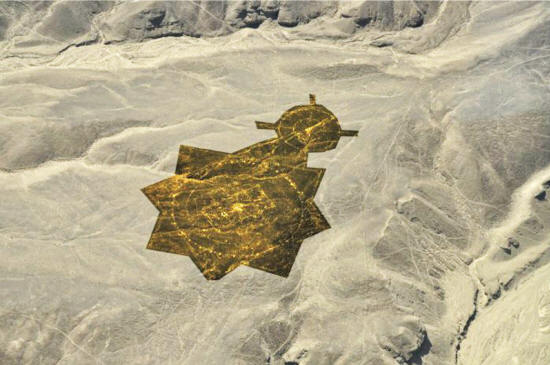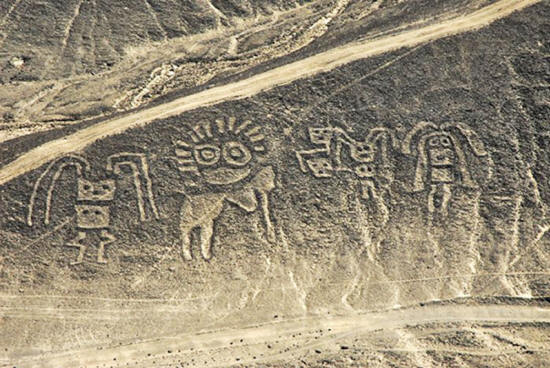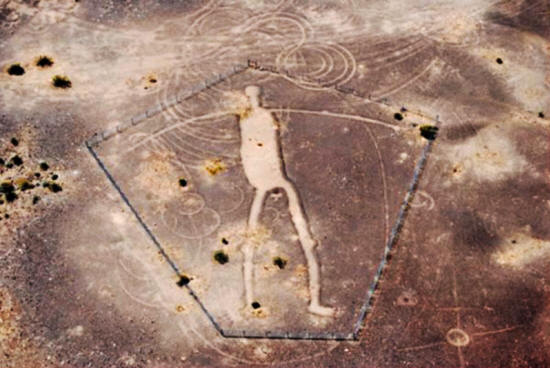|
by Ellen Lloyd
The enigmatic Palpa lines
in Peru are not as famous as
the Nazca lines, but these puzzling
lines and geoglyphs that can only be properly viewed from the air
are equally interesting.
The purpose of the lines and geoglyphs is unknown.
There are as many as 600
geoglyphs of giant size and they represent a series of human and
animal zoomorphic figures, including the Familia Real (Royal
Family), a group of eight figures on a hillside.
Credit:
Great Nazca Tours
Scientists suggest the
geoglyphs had 'ritual' astronomical functions. Over The Palpa Lines: The Sun Star
Credit: gloetzner.net
Many consider the figures
to be extraordinary example of the traditional and millenary
magical-religious world of the ancient Pre-Hispanic societies which
flourished in Peru. The Familia Real (Royal Family)
Credit and copyright Brian J. McMorrow
Who made it and why? This
is a question no-one has been able to answer so far. Obviously, its
creators believed it was important that the ground drawing must be
clearly visible from the air.
As we wrote earlier, in
the American Southwest and adjacent Mexico there are over 300
remarkable intaglios. The most famous of those are the
Blythe Intaglios, located west of
the Colorado River about 15 miles north of Blythe, California.
the
Creator of Earth and all Life.
Just like the Peru's
wonderful and intriguing Nazca lines, these figures can only be seen
properly from the air, which is the reason they weren't discovered
by white man until the 20th century. The geoglyphs are giant in size, but this doesn't prevent them from being undetected for year.
GERMAN
ARCHAEOLOGICAL INSTITUTE
Just recently, researchers found a new giant geoglyph of orca with mysterious symbols and a 'trophy head' in the Nazca Desert. The figures are difficult to discovered because they can only be seen properly from the air.
We can only wonder how
many more giant geoglyphs are still hiding just in front of our
eyes.
|








